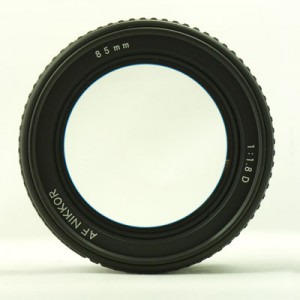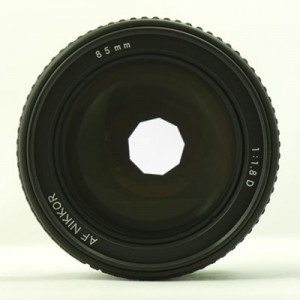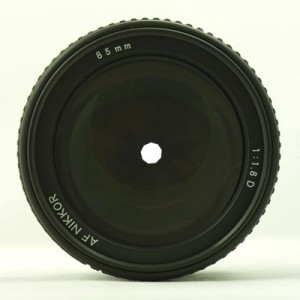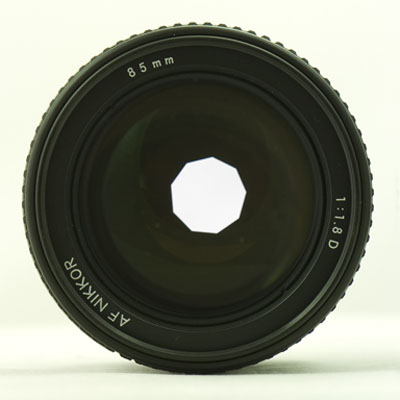The aperture of the lens refers to the size of the opening inside the lens where the light passes through to reach the film or or the digital sensor.
The aperture is measured in f-stops as indicated by the series below:
f/1 f/1.4 f/2 f/2.8 f/4 f/5.6 f/8 f/11 f/16 f/22 f/32 f/45 f/64
Each progression in single f stops to the right in the above table lets half as much light through the lens as the preceding number and in the opposite direction each progression to the left lets twice as much light in to the sensor as the previous number.
An example of a series with 1/2 stops is as in the following series:
f/1 f/1.2 f/1.4 1.7 f/2 f/2.4 f/2.8 f/3.4 f/4
From the above series we can see that the difference between an f/1.2 lens and an f/1.4 lens is 1/2 of a stop.
The f-stop number represent the ratio of the focal length of the lens to the diameter of the lens diaphragm opening of the lens and is calculated as follows:
Aperture (or f-number) = Focal Length/Diameter of the Entrance Pupil
Lens f stop, f = F/D,
Where: D = Diameter of the lens Entrance Pupil
and F = Focal length of lens
- A 50mm focal length lens with an f/1.2 aperture will have a lens diaphragm opening of diameter 41.7mm.
- A 10mm focal length lens with an aperture of f/4 will have a lens diaphragm opening of diameter 2.5mm.
- A 400mm focal length lens with an aperture of f/2.8 will have a lens diaphragm opening of diameter 142.8mm.
- A 800mm focal length lens with an aperture of f/5.6 will have a lens diaphragm opening of diameter 142.8mm.
As can be seen from the above examples, the longer lenses do become very large, not only as a result of their long focal length but also because of their large diameter entrance pupil.
A higher aperture (between f/16 to f/64) will give great depth of field, but will also let less light to the film or sensor thus requiring lower shutter speeds. A lower aperture (f/1.4 of f/1.2) will give a smaller depth of field but will also enable you to separate a subject from the background by selective focus. Generally a lens is referred to as a fast lens when it has a large aperture opening, equal to or greater than f/2.8, or a slow lens if it has n aperture of around f/5.6.

Aperture of f/1.8 in an 85mm lens gives shallow depth of field.

Aperture of f/5.6 in 85mm lens will give
reasonable depth of field and shutter speed.

Aperture of f/16 in a 85mm lens will give greater
depth of field but requires a slower
shutter speed.
There is always a very significant trade off between the main camera settings of aperture, shutter speed and ISO setting.
- Aperture affects the amount of depth of field which is the area of the image which is in focus.
- Shutter speed affects the sharpness of the image in that for sloe shutter speeds some support may be needed for the camera to avoid camera shake. This can be overcome by using a tripod or monopod.
- The ISO setting will impact on your images such the a camera using a high ISO setting will definitely produce more noise in the images and the images will be perceived as being less sharp than an image captured at lower ISO settings.
Why are lenses so expensive to purchase:
- As we have seen above, long focal length lenses are generally quite large both in length and diameter and consequently the glass lens elements in longer lenses are also large, causing them to be quite expensive.
- The cost of lenses is also related directly to their apertures. Large aperture lenses require large diameter glass elements and are consequently much more expensive.
- You can get cheaper lenses with smaller apertures such as f/4 or f/5.6, but the trade of is such that an f/ 5.6 lens is not so good in low light conditions. In general f/4 lenses in my opinion are a nice compromise taking into account the cost of the lenses.
- A rule of thumb is that a difference of one stop in two lenses can result in a cost difference of a factor of 2:1.
- Another consideration with lenses is that some lenses do have vibration reduction or image stabilisation and some lenses do not.

